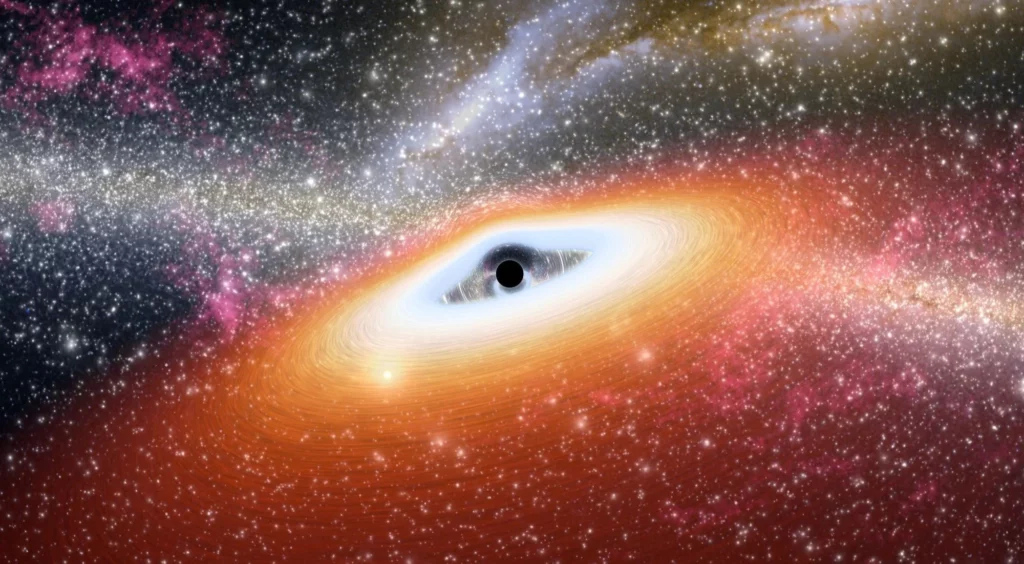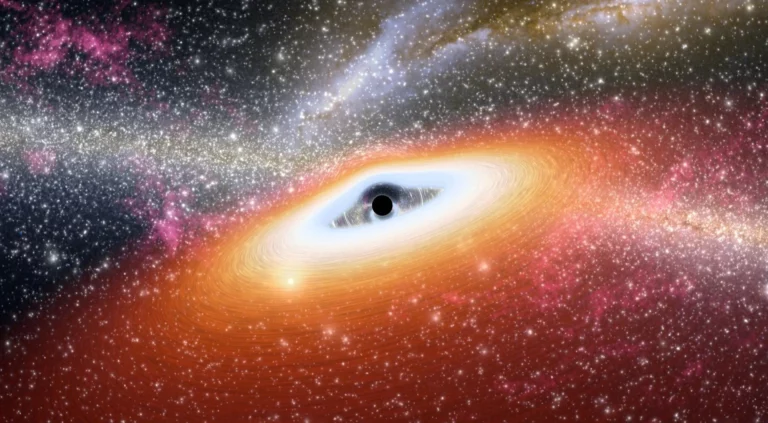Black hole collisions could possibly send waves cresting through space-time
These massive, violent mergers produce gravitational ripples that may dance like waves on the shore.
The space-time continuum is not smooth, rather it is crumpled and distorted. When gravity pulls on this fabric, it creates bumps and ripples, which we can detect as gravitational waves. These waves are produced when two colossal objects, such as black holes or neutron stars, collide with each other. In 2016, the groundbreaking LIGO experiment was able to hear these waves for the first time.

Physicists believed their mathematical models accurately described the data from the first detection of gravitational waves in 2016. However, two new studies published on February 22 in Physical Review Letters by Caltech and Johns Hopkins have revealed that the waves produced by the collision of two black holes are more intricate than previously thought. These studies, using computer models, showed that nonlinear effects occur during black hole collisions, in which gravitational waves interact with each other in a manner similar to waves on a shore.
“Nonlinear effects are what happens when waves on the beach crest and crash,” said Keefe Mitman, Caltech astronomer and lead author on one of the studies, in a press release. “The waves interact and influence each other rather than ride along by themselves. With something as violent as a black hole merger, we expected these effects but had not seen them in our models until now.”
The focus of these new studies is on a specific aspect of the collision between two black holes, referred to as ringdown, as it resembles the oscillations of a struck bell. When black holes merge, they form a large, unstable black hole that needs to reach a stable, spherical shape, releasing gravitational waves in the process, which constitute the ringdown. Due to the complexity of the mathematics involved, earlier research assumed that gravitational waves do not interact with one another.
The latest research delves into the complex dynamics of black hole collisions, specifically the ringdown phase, during which the merged black hole settles down into a stable, uniform shape, releasing gravitational waves. Previous work assumed that gravitational waves do not interact with each other due to the complexity of the mathematical equations involved. However, two recently published studies from Caltech and Johns Hopkins reveal that these waves do indeed affect each other, resulting in nonlinear effects. The Caltech team simulated the collision of two black holes in non-circular orbits, while the Johns Hopkins team modeled a head-on collision at near-light speed. The energy generated by these violent collisions is believed to be the cause of these nonlinearities. To illustrate this point, Mitman, one of the researchers, used the analogy of two people bouncing on a trampoline, where the more energetic bouncer distorts the trampoline and influences the other person’s motion. Understanding these nonlinear effects is critical to accurately measure black hole properties and to validate Albert Einstein’s theory of general relativity. The detection of numerous black hole mergers by LIGO in recent years underscores the importance of this research.
“Black hole ringdowns offer a great playground to test Einstein’s theory of relativity,” says Sumeet Kulkarni, a University of Mississippi astronomer not affiliated with the study. “But to use ringdowns as a test, one must understand them completely. This study takes us a step closer to this understanding.”
At present, the nonlinearities in black hole collisions can only be observed through the use of supercomputers. Current black hole detection technologies are not advanced enough to detect these subtle effects. Nevertheless, there are ongoing efforts to develop more sensitive detectors, and researchers are actively preparing for future endeavors.
Mark Ho-Yeuk Cheung, the lead author of the Johns Hopkins study, suggests that the next step is to determine if these effects can be detected by LIGO or the next generation detectors. The Cosmic Explorer and the Einstein Telescopes are two such projects that could potentially detect these effects, although the details of how and when they will be detected need to be quantified more precisely.
The simulations not only provide new insights into black holes but also demonstrate the scientific process in action, with two independent teams producing matching results that complement and support each other’s findings. As Mitman notes, this is another example of how theorists and numerical relativists can collaborate to uncover fascinating aspects of black hole dynamics.
Do not forget to share your opinion with us to provide you with the best posts !




It’s hard to come by well-informed people about this topic,
but you sound like you know what you’re talking about!
Thanks
I am in fact glad to read this webpage posts which contains lots of helpful information, thanks for providing these statistics.
I have read so many articles or reviews on the topic of the blogger lovers
except this paragraph is genuinely a nice article, keep it
up.